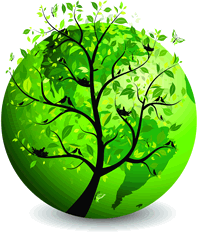How did Permaculture Begin?
Permaculture was conceived and developed in the 1970s by Bill Mollinson and David Holmgren in Tasmania, Australia.
Mollison, while spending time in the forests of Tasmania, began to speculate that humans could create systems that worked as well those of nature, or perhaps even better. In 1968 Mollison began teaching at the University of Tasmania, and then later, he became senior lecturer in Environmental Psychology. One of his students at the Tasmanian College of Advanced Education, David Holmgren, became good friends with Mollison, and the road to permaculture was paved.
It was then that Mollison and Holmgren started to develop the ideas of building agricultural systems that were both stable, and productive.
Following the years after those initial ideas were first developed, it began to become clear that in order to fully understand and take into account the whole systems thinking that surrounded some of the larger aspirations and goals of what permaculture was attempting to address, it would have to move beyond simply focusing on developing better ways of growing food.
It was because of this realization and change in strategy that the word permaculture had to evolve from its original meaning, permanent agriculture, to the full meaning of its focus today: permanent culture. Since then, it has become a much broader branch of activity, encompassing and integrating diverse facets from many different disciplines, some far outside the scope of what most people might expect when they first begin to approach a study in permaculture.
Other Contributors
However it must also be said that permaculture is really an integration of many contributions, from an assortment of pioneers and innovators that have all influenced its formation, including: Franklin Hiram King, Howard Thomas Odum, Joseph Russell Smith, Masanobu Fukuoka, Percival Alfred Yeomans, Robert Hart, Ruth Stout and Esther Deans, Sir Albert Howard, Stewart Brand, Toyohiko Kagawa, and of course, Bill Mollison and David Holmgrenm, among others.
Permaculture also encompasses many ancient practices and diverse knowledge streams that have come down to us through wisdom teachings, and philosophical thinking from a vast number of cultures and civilizations, along with many other straightforward and intellectual understandings now considered to be part of common knowledge and common sense, none of which should be discounted in a consideration of permaculture.
Since its beginnings when the term Permaculture was coined, and since the work of Bill Mollison and David Holmgrenm, many other people became, or can now be said to have been involved in permaculture, including: Albert Bates, Alias Mulambo, Allan Savory, Brad Lancaster, Brandy Gallagher, Brock Dolman, Carol Cox, Chakra Widia, Darren Doherty, Dave Jacke, Ego Lemos, Eric Toensmeier, Eugenio Gras, G. Nammalvar, Geoff Lawton, Graham Bell, Gregory Lamoureux, Jean-Martin Fortier and Maude-Hélène Desroches, Joel Glanzberg, John Jeavons, Jude Hobbs, Julious Piti, Larry Santoyo, Maddy Harland, Mark Lakeman, Martin Crawford, Michael Pilarski, Narsanna Koppula, Patrick Whitefield, Paul Stamets, Penny Livingston-Stark, Peter Andrews, Peter Bane, Roberto Perez, Robin Clayfield, Robyn Francis, Rosemary Morrow, Sepp Holzer, Starhawk, Tim Murphy, Toby Hemenway, Tom Kendall, Tom Ward, Warren Brush, Wayne Weissman, and countless more as well.
The PDC, PTT, and the Permaculture Research Institute
The Permaculture Design Course (PDC) was first taught in Tasmania, in 1981, by Bill Mollison, at the Permaculture Research Institute. These PDCs are intended to consist of an approximately 72-hour workshop that delivers as a crash-course in permaculture, and are aimed to familiarize participants with the basics of permaculture. Upon successful completion of the workshop, which involves creating a complete permaculture design plan, the participants will receive a certification in permaculture design.
The Permaculture Teachers Training (PTT) is a structured course that has been created to give participants the knowledge and confidence to teach permaculture themselves. Originally, Bill Mollison was encouraging participants of his PDC courses to become teachers, and The PTT has evolved as a workshop to teach participants who have already taken a full 72-Hour PDC course to do just that, allowing them to teach and award new PDC certificates.
The Permaculture Research Institute was founded in 1979 by Bill Mollison, and was first housed on a 147-acre farmstead named Tagari Farm in Northern New South Wales, Australia, and was moved to Zaytuna Farm in 2000, and is now located on a Permaculture demonstration site headed by Geoff and Nadia Lawton, who specialize in education and training worldwide. The Permaculture Research Insitute is a not-for-profit organisation, limited by guarantee, and provides daily Permaculture news and information via www.permaculturenews.org.
Where is Permaculture Today?
Permaculture is gaining more and more recognition as the 21st century has brought with it the problems and questions of the 20th century and before, and more and more people today are looking for better answers to how we can live sustainably on this planet, and for solutions to the problems such as climate change, food security, issues of social well being, and a multitude of other still unsolved problems in our societies.
Today, there are dozens of online networks, hundreds of permaculture demonstration sites, and thousands of people involved in permaculture today. Since its inception in the 1970s, enthusiasm and energy surrounding permaculture has grown into a worldwide philosophy and practice that is gaining more scientific recognition and media coverage every year, and is sure to continue to grow in popularity and application as more people turn away from the pollution and destruction of our past habits and look towards a new possibility for a truly sustainable and prosperous human future on this Earth.
We hope that this website, this story, and this informational history of permaculture, will cause you to pause for just a moment, and dig a little deeper into what permaculture is, what it can do, and how you might be able to get involved.
We thank you, on behalf of the Permaculture Society, for reading this today, and will ask you only one question: Are you ready to get on board?

